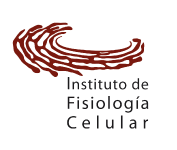A dihydropyridine-sensitive T-type Ca2+ current is the main Ca2+ current carrier in mouse primary spermatocytes
Hernandez-Cruz, A; Santi, CM; Darszon, A (1996). A dihydropyridine-sensitive T-type Ca2+ current is the main Ca2+ current carrier in mouse primary spermatocytes AM J PHYSIOL-CELL PH 271 (5) :C1583-C1593
Ca2+ entry through Ca2+ channels is likely to play an important role in the differentiation of male germ cells as well as in fertilization by mature sperm. Here we present a detailed analysis of Ca2+ currents expressed in acutely dissociated mouse primary spermatocytes. Patch-clamp recordings demonstrated that the only voltage-gated Ca2+ channels present belong to the family of T-type Ca2+ currents. Accordingly, Ni2+ (200 mu M) and amiloride (500 mu M) reduced current amplitude by 75 and 62%, respectively. To our knowledge, this is the first report of a system where T-type Ca2+ channels are expressed in isolation. Unexpectedly, 5 and 10 mu M nifedipine also reduced peak currents by 38 and 53%, respectively. Significant inhibition of the Ca2+ current occurred at concentrations as low as 2 mu M. Because mature sperm cells are unable to synthesize new proteins, these Ca2+ channels are also likely to be present in these cells, where they may contribute to the Ca2+ influx required to trigger the acrosome reaction. This notion is supported by the fact that concentrations of Ni2+ and nifedipine, which block these Ca2+ currents, also inhibit the acrosome reaction. Because these channels represent the primary pathway for voltage-gated Ca2+ entry in mouse spermatocytes, they may also participate in regulating meiotic cell division and sperm differentiation.




